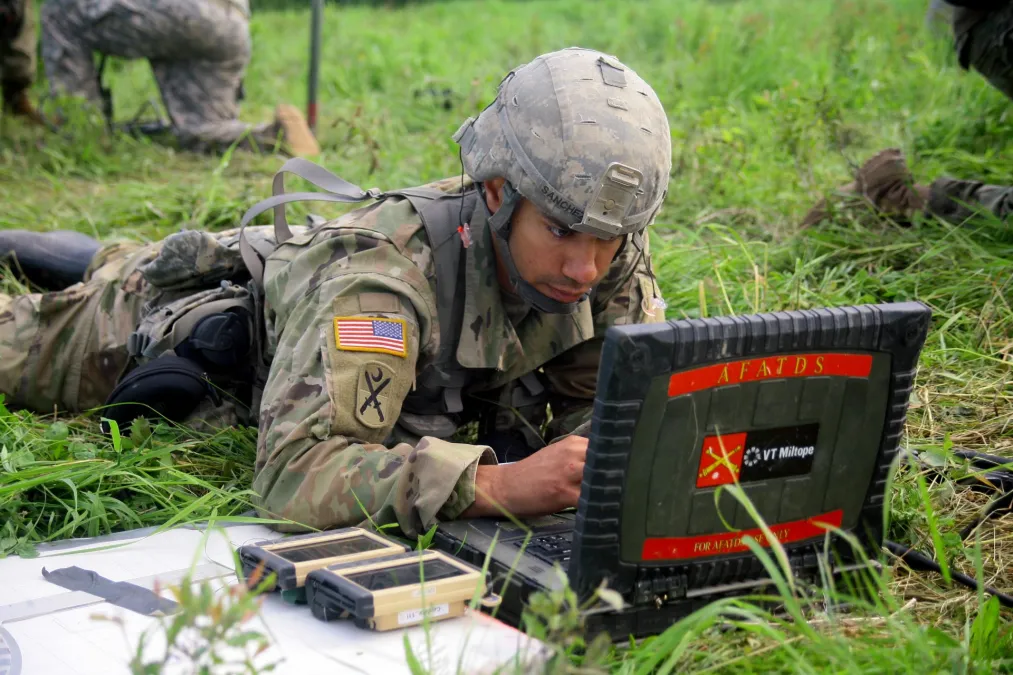Army finalizing contracting approach for scaled-up version of enterprise data platform

The Army is combing through industry feedback on how the service can effectively turn its Army Data Platform (ADP) into a multi-vendor program that adds new capabilities, as well as flexibility on how users can purchase them.
The service published a request for information in November that sought comments on the organization’s vision for the so-called ADP 2.0 — including plans to sign on multiple companies that can offer additional easy-to-use data analytics tools and support the platform’s growing number of users. Now, officials are taking responses from both the RFI and input given during a recent industry day to craft a final request for proposal, with the intent to award initial contracts sometime this year.
David Markowitz, the Army’s chief data and analytics officer, told DefenseScoop the overarching goal for ADP 2.0 is to create flexibility to scale on-demand.
“ADP 2.0 is really about, how do we have multiple vendors [and] a task order process that we can get kind of a fair price across a range of capabilities — from very simple data pipelines [that can] give me some legacy data and package it in a nice way as a data product, to more complicated user experiences,” he said in an interview.
The platform is a follow-on to the service’s current ADP, which has become more popular among Army users since it was first introduced in 2018, Markowitz said. It features a suite of six data platforms, including Vantage — a data analytics platform built by Palantir that leverages artificial intelligence and machine learning tools to assist decision-making.
Vantage originally focused on personnel and combat readiness, but has since become the enabling software system in ADP with around 45,000 active users. In December, the Army awarded Palantir a contract extension worth up to about $400 million for four years to continue supporting the program.
But Markowitz emphasized ADP’s success has created increased demand for the platform across the entire service, prompting the Army to pivot to a multi-vendor contracting scheme. The broad vision is to onboard different companies with various “no-code/low-code” AI toolsets and commercial-off-the-shelf products that users can easily purchase for their specific mission needs.
The Army doesn’t know exactly how many vendors it wants to have contracted for ADP 2.0, but it’s considering ways to allow companies to cycle on and off the program as technology changes and new capabilities are developed.
“If you’ve got a task order, we can easily assign it rapidly but still have some level of competition and best value,” Markowitz said. “We don’t want too many [vendors], because that would slow down that type of separate task order. And we don’t want too few, because we want some view of what we have.”
While the November RFI inquired about what specific capabilities industry could provide to ADP 2.0, it also asked for suggestions on how the Army should structure the contract — either through an other transaction authority or a multi-award task order ID/IQ, for example — to support the program’s goal of flexibility.
Some of the biggest feedback from industry has been how the Army can effectively buy both tools and professional services from vendors, Markowitz noted.
“Once we have the platforms, you’d rather use other contracting vehicles to get professional services,” he said. “So, we’re trying to explore how to first get a new platform for a new data area and allow [for that] assisted acquisition … to try to make that work.”
Another point of issue for industry has been defining what exactly a task order under ADP 2.0 means, as some missions might require more complicated data analytics and integration work than others. Moving forward, the Army plans to include a range of task orders that clearly distinguishes between different requirements, he added.
Markowitz said the Army’s initial plan was to publish a final RFP by late February or early March and for contracts to be awarded a few months after.
“We’ve gone on this growth strategy of more and more Army becoming a digital Army, a data-driven Army. And the scale and how we have our vendors available to meet the rapid needs of the Army is key to that for our future,” he said.






